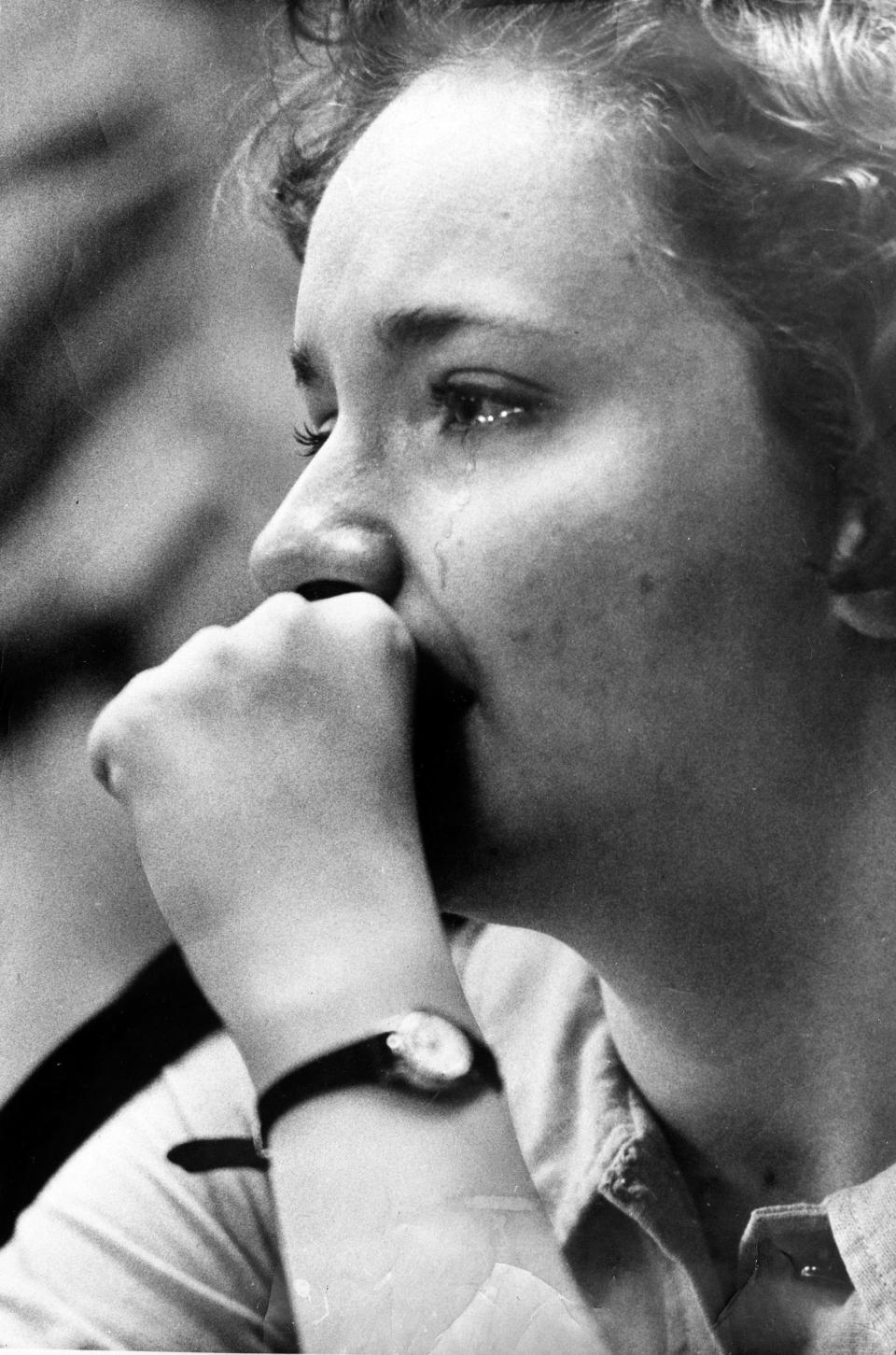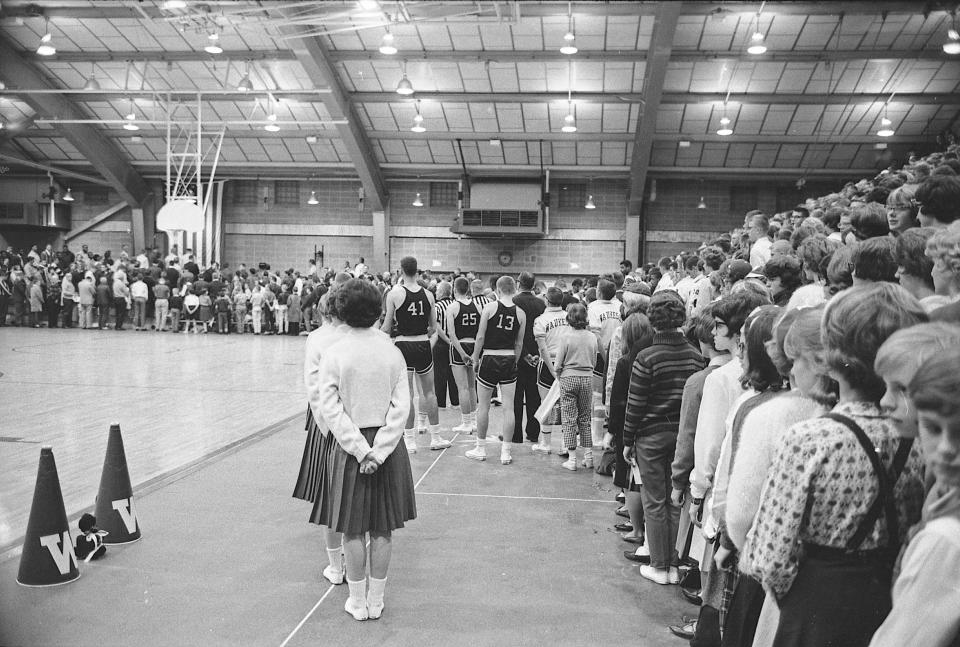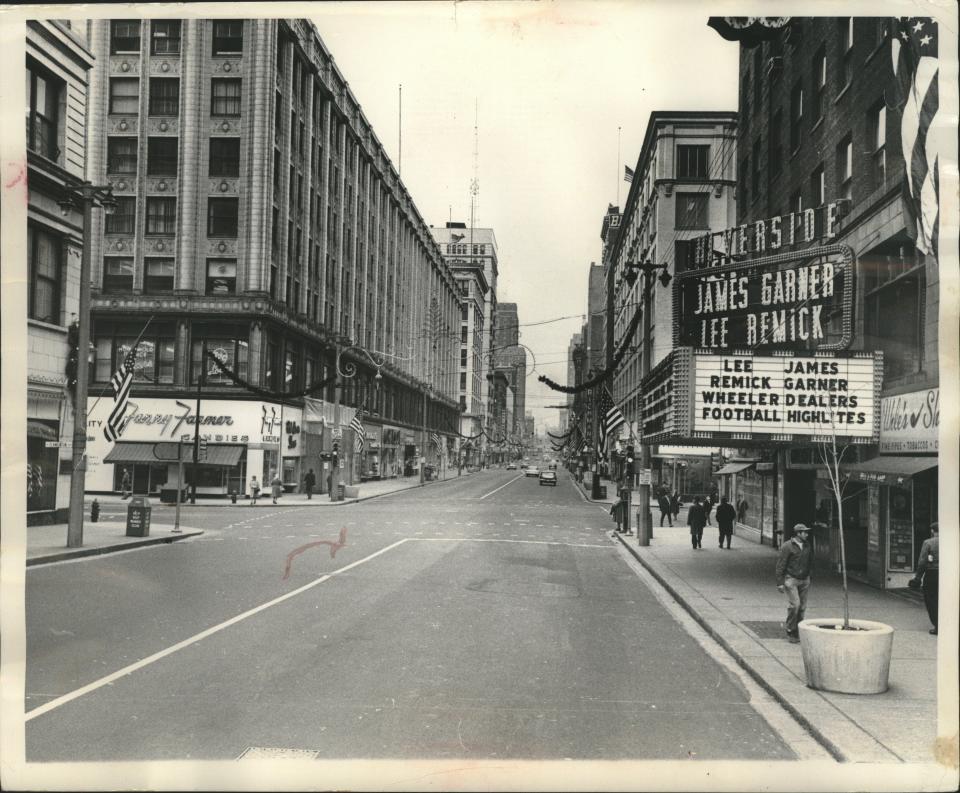'Many of us cried. None of us talked': How Milwaukee reacted to the Kennedy assassination
- Oops!Something went wrong.Please try again later.
- Oops!Something went wrong.Please try again later.
- Oops!Something went wrong.Please try again later.
- Oops!Something went wrong.Please try again later.
Note: This is an edited and updated version of a story that was first published in the Milwaukee Journal Sentinel's Green Sheet on Nov. 25, 2015.
Like the rest of the nation, Milwaukee mourned President John F. Kennedy in ways profound and personal.
From the afternoon of Nov. 22, 1963, when Kennedy was assassinated while riding in a motorcade in Dallas, through the state funeral three days later, Milwaukeeans stopped, cried, prayed and reflected.
In a late edition published the afternoon of Nov. 22, The Milwaukee Journal reported that "strangers forgot formality, as they gathered in groups to talk about the shooting. One man, near the Central YMCA (at North Ninth Street and West Wisconsin Avenue), stopped people as they came out of the building and said: 'The president has been shot and is in critical condition.' A woman, responding, said, 'I don't believe it.'"

After sending telegrams of support to first lady Jacqueline Kennedy and the new president, Lyndon B. Johnson, Milwaukee Mayor Henry Maier ordered city flags at half staff and proclaimed Nov. 25, 1963, the day of the funeral, a day of mourning in the city.
"There are really no words to express the shock I feel," Maier said in a statement in the Nov. 23 Sentinel.

A number of schools closed early and, Nov. 22 being a Friday, some decided to cancel the night's basketball games.
A high school sophomore told the Milwaukee Sentinel: "I was in study hall when it was announced that the president was shot. Radio broadcasts then were put over the intercom. Some of the girls, and some boys, too, cried. Then I went to the lunchroom. None of us could eat; we didn't want to. I felt sick, and I suppose the others felt the same way. We just sat there, listening.
"Then it was announced that Mr. Kennedy died. Many of us cried. None of us talked. What was there to say?"

Learning of Kennedy's assassination from a cab driver
Among the other events canceled that Friday: a Milwaukee County Democratic Party fundraiser planned for George Devine's Million Dollar Ballroom, known today as the Eagles Ballroom at the Rave. The evening's headliner was to be comedian Vaughn Meader, whose career had skyrocketed the past two years thanks to his chart-topping comedy album, "The First Family," on which he impersonated Kennedy.
Meader learned about the assassination when the cab driver who picked him up at Mitchell International Airport (then General Mitchell Field) as if he'd heard that Kennedy had been shot.
"I figured he recognized me, and I asked what the gag was," Meader told the Sentinel.
A number of other events, including the downtown Christmas parade, were postponed that weekend, although the Milwaukee Auto Show and the Holiday Folk Fair went on as scheduled.

Day of Kennedy's funeral: Streets empty, bars closed
The city was even quieter on Monday the 25th, the day of Kennedy's funeral.
According to the Sentinel, Wisconsin Avenue — in those days, usually filled with pedestrians either going to work or shopping at downtown department stores like Boston Store and Gimbels-Schusters — was all but deserted, with most downtown businesses closed until 2 p.m. Gimbels-Schusters filled its storefront displays with red and white flowers, red, white and blue ribbons, and American flags against a black background.
Many businesses shut down for the funeral.
"A … laundry just off Wisconsin Avenue made the announcement simply with a hand-lettered sign: 'Closed to 2 p.m. Monday. John F. Kennedy,'" the Sentinel reported.
Down the street, the Sentinel wrote, "one man tried the door of a cocktail lounge. It was locked."
For the first time in years, the message board on Milwaukee's City Hall — memorialized years later during the opening credits of "Laverne & Shirley" — was blank. A member of Maier's staff told the Sentinel that no message seemed appropriate.
At the American Motors Corp. plant on North Richards Street, when the funeral was about to start in Washington, "the stamping mill that crunches out automobile roofs lifted its giant hammer and stopped."
Milwaukee services for a murdered president
At the Milwaukee County Courthouse, where offices closed at 11 a.m. for the start of the funeral, "a three-shot salute reverberated through the marble corridors … followed by taps, in crisp, clear notes that echoed through the nearly empty building."
Services were conducted around the city, including a memorial service held by the Greater Milwaukee Council of Churches at First Methodist Church.
At First Methodist, the Rev. M.J. Battle of Calvary Baptist Church compared Kennedy's death to that of Abraham Lincoln, who "was also assassinated, because of his efforts to bring about civil rights and to save the Union."
Battle, The Journal reported, said "Kennedy had tried to give Negroes 'the second true emancipation.' And, he said, the greatest honor legislators could pay to his memory was to enact his civil rights bill."
This article originally appeared on Milwaukee Journal Sentinel: How Milwaukee reacted to President John F. Kennedy's assassination

